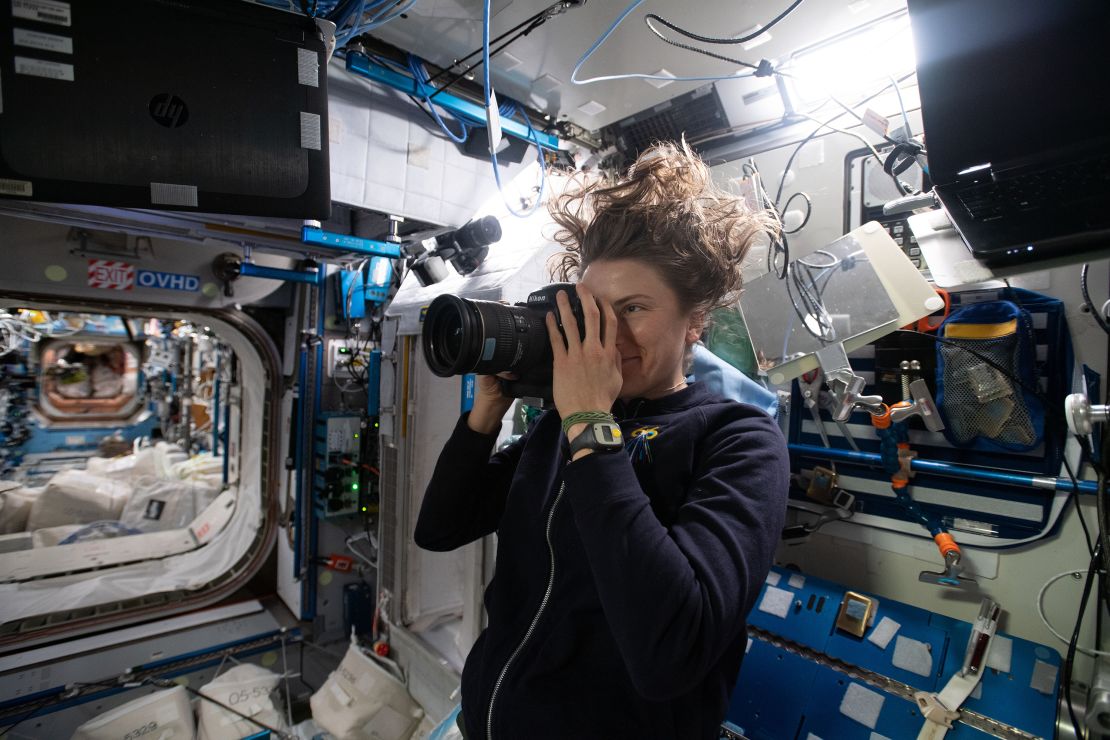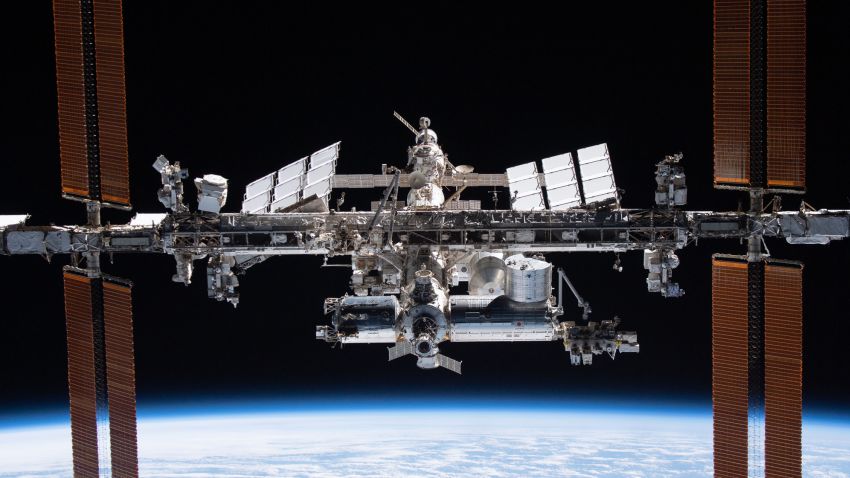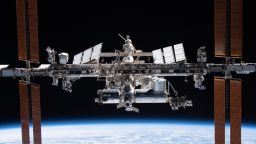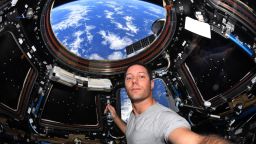Sign up for CNN’s Wonder Theory science newsletter. Explore the universe with news on fascinating discoveries, scientific advancements and more.
The International Space Station will intentionally fall to Earth and come to rest within the depths of Point Nemo, a watery graveyard 2,000 miles (3,219 kilometers) north of Antarctica, in January 2031.
The space station will join the fragments of Russia’s Mir and NASA’s Skylab in the South Pacific Ocean Uninhabited Area, home to more than 263 pieces of intentionally sunk space debris.
Since November 2000, the space station has functioned as an orbiting laboratory 227 nautical miles (420 kilometers) above our planet, as well as a home to continuously rotating crews of astronauts and cosmonauts. It has been the site of multiple firsts as astronauts have successfully sequenced DNA and feasted on crops grown in space.
The ultimate fate of the space station has been part of the plan since before the modules ever launched. But when the space station deorbits, it will be the end of an era. And part of its legacy will be preserved through space archaeology.
Now that NASA has shared an updated transition plan for the space station, which currently doesn’t include returning any artifacts to be used for research or museums, the studies a team of researchers want to conduct on the floating lab takes on added significance.
What’s more, by understanding the ways that astronauts have used the space and tools on the space station, this input could be used in the design of future spacecraft and habitats during exploration of the moon and Mars.
First of its kind
The very first archaeological study ever performed outside of Earth was the brainchild of Justin St. P. Walsh, associate professor of art history and archaeology at Chapman University in California, and Alice Gorman, associate professor within Flinders University’s College of the Humanities, Arts and Social Sciences in Australia. They began the creative process of considering the space station from an archaeological perspective in December 2015.
With the help of the ISS National Laboratory’s Center for the Advancement of Science in Space and implementation partner Axiom Space, Walsh and Gorman were finally able to see the first step of their investigation become a reality this year.
“ISS is such an important site for the development of humanity living in space,” Walsh said. “If this were a site on Earth, we would do everything we could to preserve it. But that isn’t technically feasible, so the next thing archaeologists do, like when sites are going to be flooded due to the construction of a dam, for example, is document everything we can about the site, and preserve that documentation and any samples” for posterity.
The project began on the space station in January. The experiment, called the Sampling Quadrangle Assemblages Research Experiment, or SQuARE, is a simple one.
Archaeologists often set up a test pit at a site of interest, dividing it into a grid of squares for excavation purposes.

However, it’s not possible to dig through layers of the space station – or for scientists to just zip up there for a study.
Astronauts placed 3-foot (1-meter) tape squares on walls throughout the space station and are photographing them each day for 60 days to show how these areas change over time.
The findings could emulate the way layers of soil preserve different moments in time at archaeological sites.
The squares have been placed at the galley table where the crew eats, across from the latrine, a workstation and two different science stations, as well as a place chosen by the crew. The six sites capture what daily life is like in zero gravity.
Documenting a slice of life in space
Heritage sites are often thought of as being places of historical importance on Earth – but they exist in space, too, Gorman said.
The Apollo landing sites on the moon are a prime example, and as we leave human and robotic footprints behind on places like Mars, those places of significance will spread.
“Nobody’s collected data like this before, so we don’t have it for Mir and Skylab,” Gorman said.
European Space Agency astronaut Matthias Maurer tweeted his excitement about participating in the experiment in February.
“Space archaeology with SQuARES. Using a ruler & colour chart we document the use & changes of defined areas on the #ISS to help design future spaceships & habitats,” Maurer wrote in his tweet.
It could be especially useful when trying to determine where to place what Gorman refers to as “gravity surrogates,” or the bungee cords, clips and self-fastener strips that are essential for life in the absence of gravity.

“We’re expecting to find aspects of adapting to life in that kind of environment that nobody knew about before,” Gorman said.
“If you were an archaeologist excavating a Viking longhouse, you might have ideas about what works and doesn’t work about them, but you don’t have the opportunity to knock on the door of a Viking and say, ‘Hey, I’ve got a few ideas here for the way you design your next little village.’ But we have that opportunity.”
A futuristic confluence
The SQuARE experiment will wrap on March 22. When the crew, including NASA astronauts Kayla Barron, Raja Chari, Thomas Marshburn and Mark Vande Hei, return to Earth this spring, the researchers will get a chance to talk to them.
Gorman and Walsh envision a series of six additional experiments if they get the funding.
Other experiments include recording the acoustic environment of the space station and documenting the quest for privacy in a small habitat, something which could be useful as crews prepare to experience time on the much smaller Gateway that will orbit between the moon and Earth as a hub supporting lunar exploration.
In turn, the lessons that Gorman and Walsh are learning from their first experiment aboard the space station could be applied to remote sites on Earth, like the artifacts left on Mount Everest after decades of people ascending to its peak.
“This might be the beginning of different kinds of archaeology that we could see in the future,” Gorman said.







